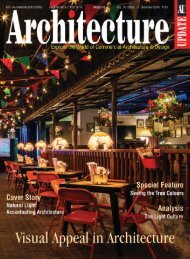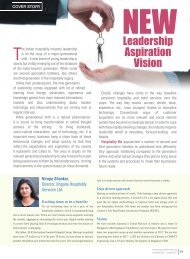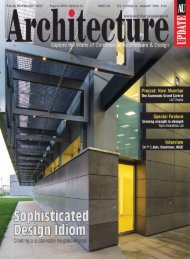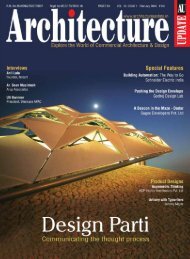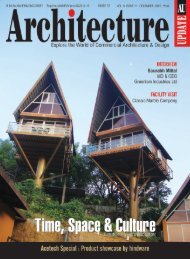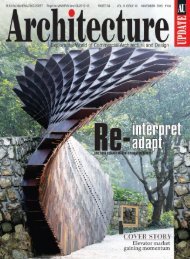Unfolding Narratives
Create successful ePaper yourself
Turn your PDF publications into a flip-book with our unique Google optimized e-Paper software.
Chaturvedi Director, Chintan Environmental Research and Action<br />
Group, stated that citizenship is the right to belong to a city and this<br />
citizenship needs to be maintained respectfully. Poonam Bir Kasturi,<br />
Founder, Daily Dump, highlighted the need to segregate household<br />
waste. She suggested ideas that would ensure that landfills in India would<br />
not become toxic hubs of the city. Ashok Behera, Vice President, Indian<br />
Metals & Ferro Alloys Limited, discussed on low-density aggregate<br />
(LDA) and suggested the use of fly ash for making LDA. He shared his<br />
experience of using LDA in industrial and residential projects, which he<br />
claims is more eco-friendly and sustainable.<br />
SOCIAL UPLIFTMENT AND INCOME EQUALITY<br />
The panelists in the social upliftment and income equality session<br />
discussed and presented their work broadly on 3 issues that aid in social<br />
upliftment, namely skill development, affordable housing and policy<br />
making. Preeti Sinha, Senior President and Global Convenor, YES Bank,<br />
presented various affordable housing schemes which are delivered by<br />
YES Bank. Selvam Ramanathan, CEO & Director, Geotrix Building<br />
Envelope Pvt. Ltd and J P Shroff, CMD, Shroff Group, shared their<br />
experiences in empowerment of construction workers through skill<br />
development.<br />
INDOOR ENVIRONMENTAL QUALITY<br />
Sumit Sharma, Fellow, Centre for Environmental Studies, TERI spoke<br />
about the integrated approach of Indoor Environmental Quality (IEQ)<br />
improvement by reducing biomass fuel consumption and by adopting a<br />
green lifestyle in rural and urban areas. He highlighted how this would<br />
also help India in achieving the various Sustainable Development Goals<br />
(SDGs) set by the United Nations. According to Varun Pahwa, Executive<br />
Vice President, DRI, there is a revolution in the market for IEQ and that<br />
it can be enhanced through the use of mechanical ventilation techniques.<br />
He emphasised on how evaporative cooling can help reduce energy<br />
consumption in the Indian climate. Corey Enck, LEED VP, US Green<br />
Building Council, spoke about how US based standards like LEED and<br />
the WELL certification address the IEQ.<br />
SMART NETERING FOR BUILDINGS<br />
The urban world is becoming a platform for generating data on the<br />
workings of human society; human interaction with physical<br />
environment; and manifold economic, political, social processes. Dr<br />
Satish Kumar, Executive Chairman at the Alliance for an Energy<br />
Efficient Economy, mentioned that a variety of sensors and meters are<br />
designed and installed so that not only the users and occupants of the<br />
buildings are more comfortable (thermally, visually, and acoustically) but<br />
are able to control key performance functions in a simple and effective<br />
fashion. This is reflected in the proliferation of different sensors<br />
(temperature, flow, illumination, demand and energy meters, smart<br />
thermostats, etc.) that deploy different communication protocols,<br />
applications that allow users to control different operational attributes at<br />
the touch of a screen to achieve the final outcome. On the other hand, as<br />
distributed energy generation and renewables integration, demand<br />
response, energy storage become ingrained as part of smart grid and<br />
smart city focussed development, buildings are no more seen as passive<br />
structures but as a part of a larger urban ecosystem that can play a<br />
significant role in energy and environmental management at the macro<br />
level and contribute significantly to the economic value that is created<br />
inside and besides them.<br />
Talking about innovation in transportation, Dr Anvita Arora, Head,<br />
Innovative Transport Solutions, pointed out that ‘mobility is a derived<br />
demand’ which must be catered to. She talked about the current trends<br />
of digitalisation and the significant role it plays in creating a<br />
sustainable city.<br />
Talking about post disaster resettlement, Dr Ila Gupta, Director, MBS<br />
School of Planning & Architecture talked about the vulnerability of the<br />
Himalayan region. She highlighted a range of causal factors, such as<br />
disturbances in ecosystem, population growth, poverty, natural resource<br />
degradation, climate change, etc. In addition to this, she informed that<br />
owing to factors, such as physical isolation, lack of earthquake resistant<br />
building technology, poor communication technologies, the Himalayan<br />
communities were vulnerable to disasters. She highlighted the need for<br />
decentralised planning and assessment of tourism as some of the measures<br />
for decreasing the impact of disasters in the region.<br />
The summit was concluded on Green Lifestyle where the panellists<br />
expressed concerns about the growing disconnect between nature and the<br />
lifestyle and how environment aren’t been protected.<br />
<br />
Architecture Update March 2016 45



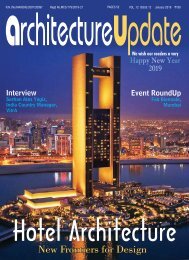
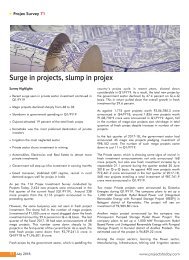
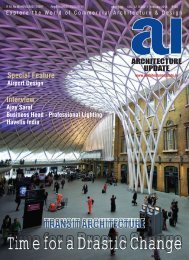

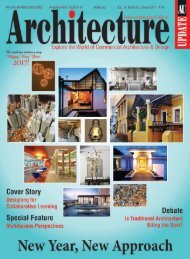
![40-41] Book Review_Sourabh Gupta](https://img.yumpu.com/56720840/1/190x253/40-41-book-review-sourabh-gupta.jpg?quality=85)
